Design of Orbital Angular Momentum Antenna Array for Generating High-Order OAM Modes
Abstract
:1. Introduction
2. Structural Design and Simulation
2.1. Ring Patch Antenna Generating First-Order OAM Wave
2.2. OAM Wave Array Antennas That Generate Higher-Order OAM Modes
3. Experimental Test Results and Discussion
4. Conclusions
Author Contributions
Funding
Data Availability Statement
Conflicts of Interest
References
- Padgett, M.; Allen, L. Light with a twist in its tail. Contemp. Phys. 2010, 41, 275–285. [Google Scholar] [CrossRef]
- Wu, G.; Chan, K.F.; Qu, S.; Tong, K.F.; Chan, C.H. Orbital angular momentum (OAM) mode-reconfigurable discrete dielectric lens operating at 300 GHz. IEEE Trans. Terahertz Sci. Technol. 2020, 10, 480–489. [Google Scholar] [CrossRef]
- Wang, Z.; Pan, X.; Yang, F.; Xu, S.; Li, M. Real-Time Mode Switching and Beam Scanning of High-Gain OAM Waves Using a 1-Bit Reconfigurable Reflectarray Antenna. Electronics 2020, 9, 2181. [Google Scholar] [CrossRef]
- Altynnikov, A.; Platonov, R.; Tumarkin, A.; Petrov, P.K.; Kozyrev, A. Formation of Millimeter Waves with Electrically Tunable Orbital Angular Momentum. Coatings 2021, 11, 569. [Google Scholar] [CrossRef]
- Cao, Y.; Yan, S.; Liu, W.; Li, J. Generation of multi-OAM beams using a compact dual-mode source and a 3D-printed Luneburg lens. Opt. Express 2022, 30, 41181–41195. [Google Scholar] [CrossRef]
- Mari, E.; Spinello, F.; Oldoni, M.; Ravanelli, R.A.; Romanato, F.; Parisi, G. Near-Field Experimental Verification of Separation of OAM Channels. IEEE Antennas Wirel. Propag. Lett. 2014, 14, 556–558. [Google Scholar] [CrossRef]
- Padgett, M.; Bowman, R. Tweezers with a twist. Nat. Photonics 2011, 5, 343–348. [Google Scholar] [CrossRef]
- Allen, L.; Beijersbergen, M.W.; Spreeuw, R.; Woerdman, J.P. Orbital angular momentum of light and the transformation of laguerre-gaussian laser modes. Phys. Rev. A 1992, 45, 8185–8189. [Google Scholar] [CrossRef]
- Thidé, B.; Then, H.; Sjöholm, J.; Palmer, K.; Bergman, J.; Carozzi, T.D.; Istomin, Y.N.; Ibragimov, N.H.; Khamitova, R. Utilization of photon orbital angular momentum in the low-frequency radio domain. Phys. Rev. Lett. 2007, 99, 087701. [Google Scholar] [CrossRef]
- Tennant, A.; Allen, B. Generation of oam radio waves using circular time-switched array antenna. Electron. Lett. 2012, 48, 1365–1366. [Google Scholar] [CrossRef]
- Schemmel, P.; Pisano, G.; Maffei, B. Modular spiral phase plate design for orbital angular momentum generation at millimetre wavelengths. Opt. Express 2014, 22, 14712–14726. [Google Scholar] [CrossRef] [PubMed]
- Hui, X.; Zheng, S.; Hu, Y.; Xu, C.; Jin, X.; Chi, H.; Zhang, X. Ultralow reflectivity spiral phase plate for generation of millimeter-wave OAM beam. IEEE Antennas Wirel. Propag. Lett. 2015, 14, 966–969. [Google Scholar] [CrossRef]
- Naseri, H.; PourMohammadi, P.; Melouki, N.; Ahmed, F.; Iqbal, A.; Denidni, T.A. Generation of Mixed-OAM-Carrying Waves Using Huygens’ Metasurface for Mm-Wave Applications. Sensors 2023, 23, 2590. [Google Scholar] [CrossRef] [PubMed]
- Gao, X.L.; Huang, S.; Wei, Y.; Zhai, W.; Xu, W.; Yin, S.; Zhou, J.; Gu, W. An orbital angular momentum radio communication system optimized by intensity controlled masks effectively: Theoretical design and experimental verification. Appl. Phys. Lett. 2014, 105, 241109. [Google Scholar] [CrossRef]
- Li, H.; Kang, L.; Wei, F.; Cai, Y.M.; Yin, Y.Z. A Low-Profile Dual-Polarized Microstrip Antenna Array for Dual-Mode OAM Applications. IEEE Antennas Wirel. Propag. Lett. 2017, 16, 3022–3025. [Google Scholar] [CrossRef]
- Li, L.; Zhou, X. Mechanically Reconfigurable Single-Arm Spiral Antenna Array for Generation of Broadband Circularly Polarized Orbital Angular Momentum Vortex Waves. Sci. Rep. 2018, 8, 5128. [Google Scholar] [CrossRef]
- Jha, P.; Wu, K. Orbital Angular Momentum Wave and Propagation. In Recent Microwave Technologies; IntechOpen: London, UK, 2022. [Google Scholar]
- He, Z.X.; Wang, Y.T.; Wang, X.L.; Kupriianov, A.S.; Tuz, V.R.; Fesenko, V.I. Multi-band orbital angular momentum mode-division multiplexing by a compact set of microstrip ring-shaped resonator antenna. Opt. Express 2022, 30, 46209–46226. [Google Scholar] [CrossRef]
- Xu, J.C.; Chen, L.; Zhai, X.; Zhang, R.; Mcdonald-Maier, K.D.; Huang, S.; Bi, K. Generation of Continuously Variable-mode Orbital Angular Momentum Beams. Eng. Sci. 2020, 10, 51–57. [Google Scholar] [CrossRef]
- Yao, E.; Franke-Arnold, S.; Courtial, J.; Barnett, S.; Padgett, M. Fourier relationship between angular position and optical orbital angular momentum. Opt. Express 2006, 14, 9071–9076. [Google Scholar] [CrossRef]
- Roberta, Z.; Barnett, S.M. Quasi-Intrinsic Angular Momentum and the Measurement of Its Spectrum. Phys. Rev. Lett. 2006, 96, 113901. [Google Scholar]
- Xu, J.C.; Hao, Y.; Bi, K.; Zhang, R.; Huang, S.; Zhou, J. Microwave Orbital Angular Momentum Beam Generation Based on Circularly Polarized Metasurface Antenna Array. Eng. Sci. 2019, 6, 30–35. [Google Scholar] [CrossRef]
- Guo, C.; Zhao, X.; Zhu, C.; Xu, P.; Zhang, Y. An OAM Patch Antenna Design and Its Array for Higher Order OAM Mode Generation. IEEE Antennas Wirel. Propag. Lett. 2019, 18, 816–820. [Google Scholar] [CrossRef]
- Wu, Q.W.; Shi, Y.; Li, L. Low-Profile Dual Polarized Multi-Mode OAM Antenna Array. In Proceedings of the 2023 IEEE MTT-S International Wireless Symposium (IWS), Qingdao, China, 14–17 May 2023; pp. 1–3. [Google Scholar]
- Sudheep, V.; Srinivas, M.; Kumar, G.K.; Rao, M.V.; Yuvaraj, S.; Kartikeyan, M.V. A Low-Profile UCA Antenna to Generate Conical beam based on OAM Technique for Vehicular Applications. In Proceedings of the 2023 3rd International Conference on Artificial Intelligence and Signal Processing (AISP), Vijayawada, India, 18–20 March 2023; pp. 1–4. [Google Scholar]
- Naseri, H.; PourMohammadi, P.; Melouki, N.; Iqbal, A.; Denidni, T.A. A Low-Profile Antenna System for Generating Reconfigurable OAM-Carrying Beams. IEEE Antennas Wirel. Propag. Lett. 2023, 22, 402–406. [Google Scholar] [CrossRef]
- Dhanade, Y.B.; Patnaik, A. Multi-mode Orbital Angular Momentum (OAM) Antenna Array. In Proceedings of the 2021 IEEE Indian Conference on Antennas and Propagation (InCAP), Jaipur, India, 13–16 December 2021; pp. 490–493. [Google Scholar]
- Veerabathini, S.; Rao, M.V.; Yuvaraj, S.; Kartikeyan, M.V. Generation of a Dual-Mode OAM Beam using a CP UCA Antenna for Wireless Communication. In Proceedings of the 2023 IEEE Wireless Antenna and Microwave Symposium (WAMS), Ahmedabad, India, 7–10 June 2023; pp. 1–4. [Google Scholar]
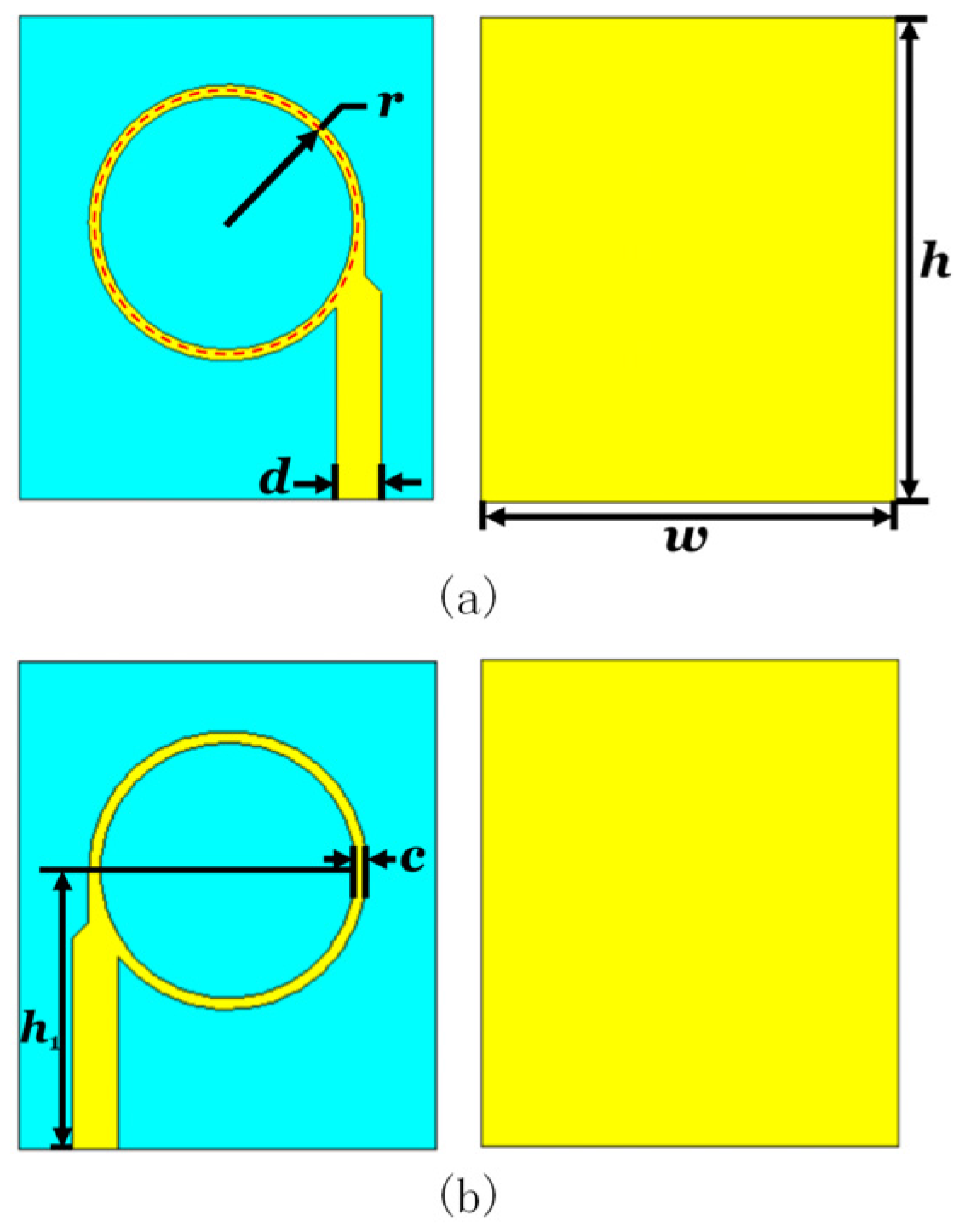




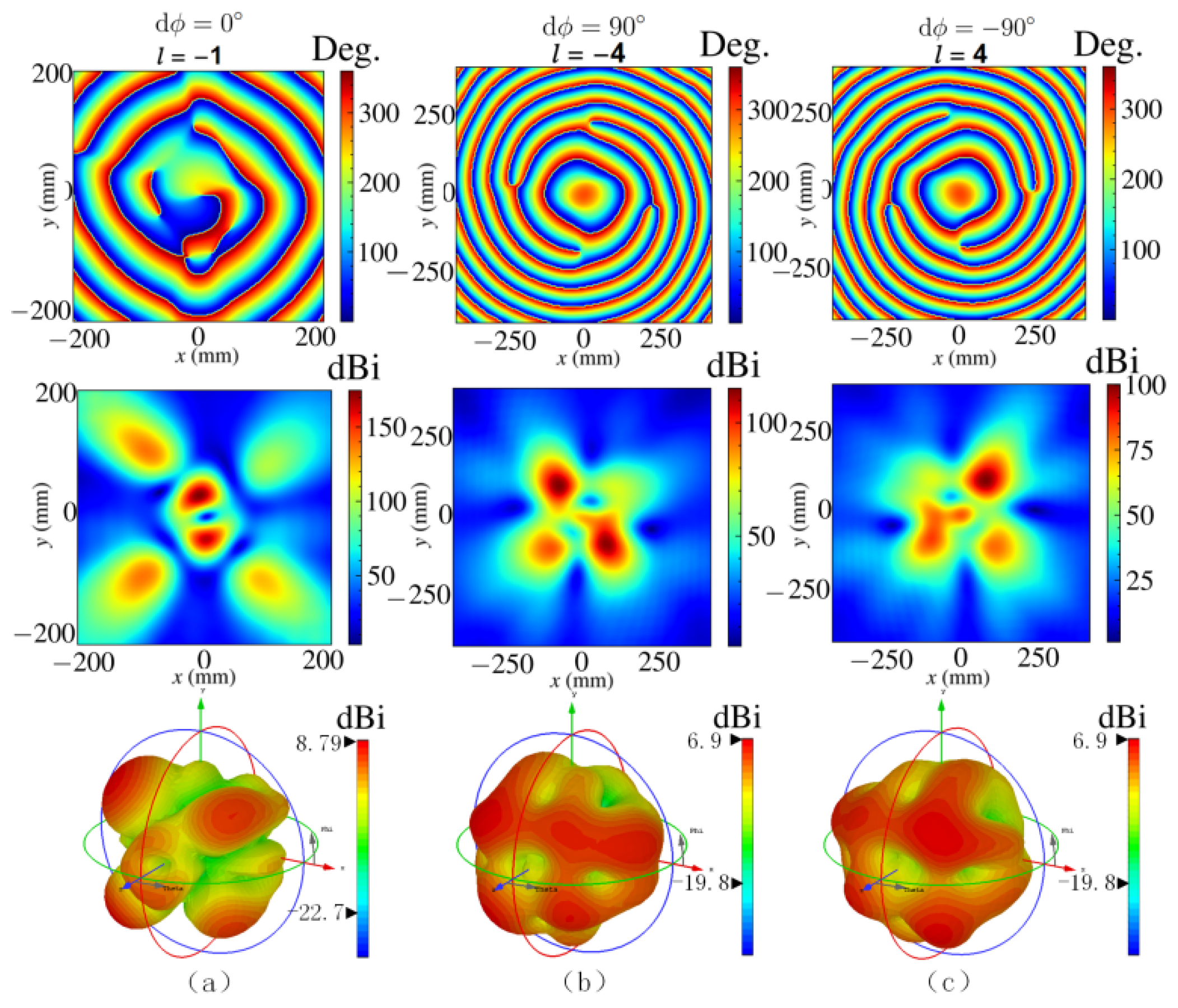
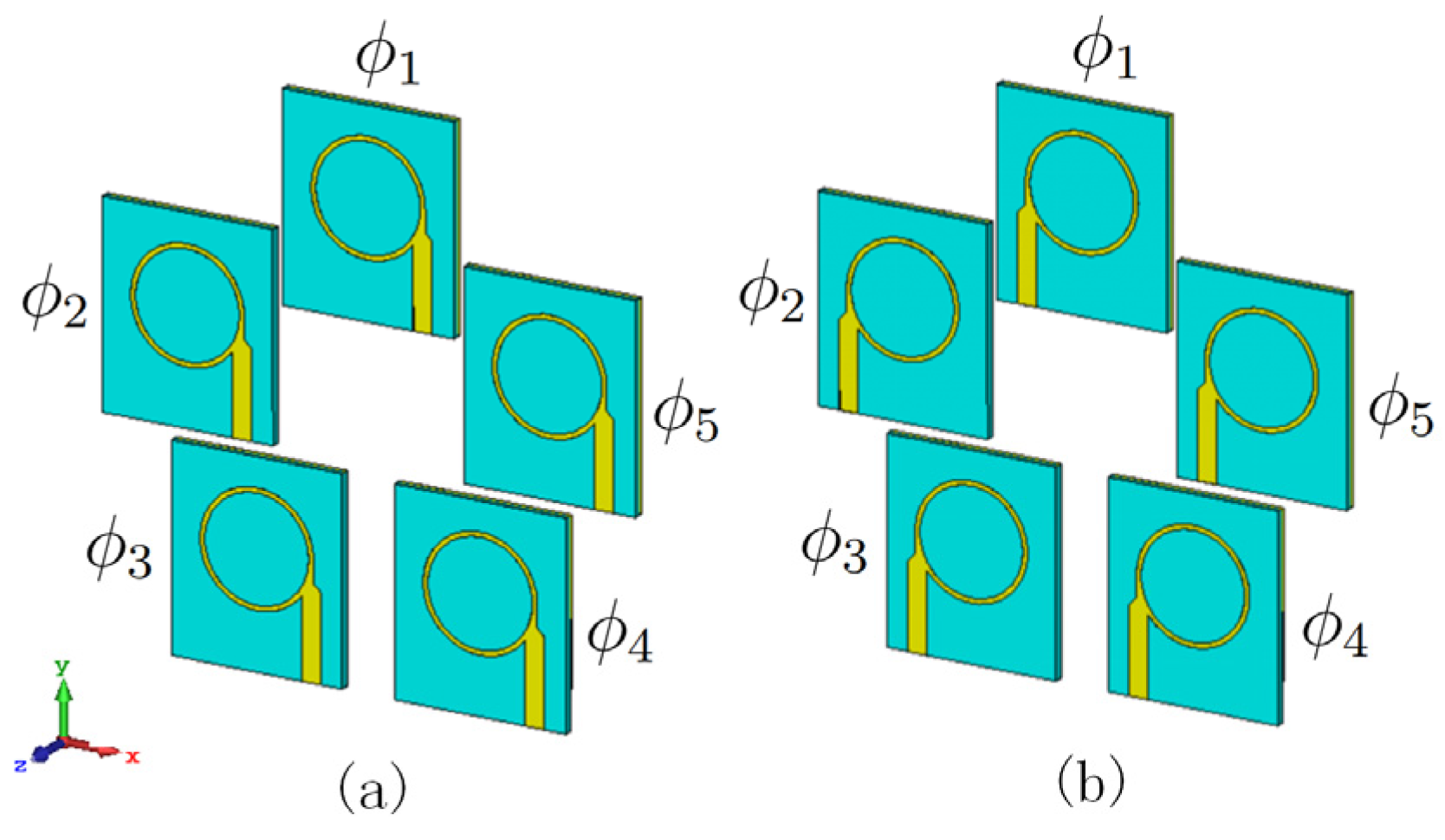
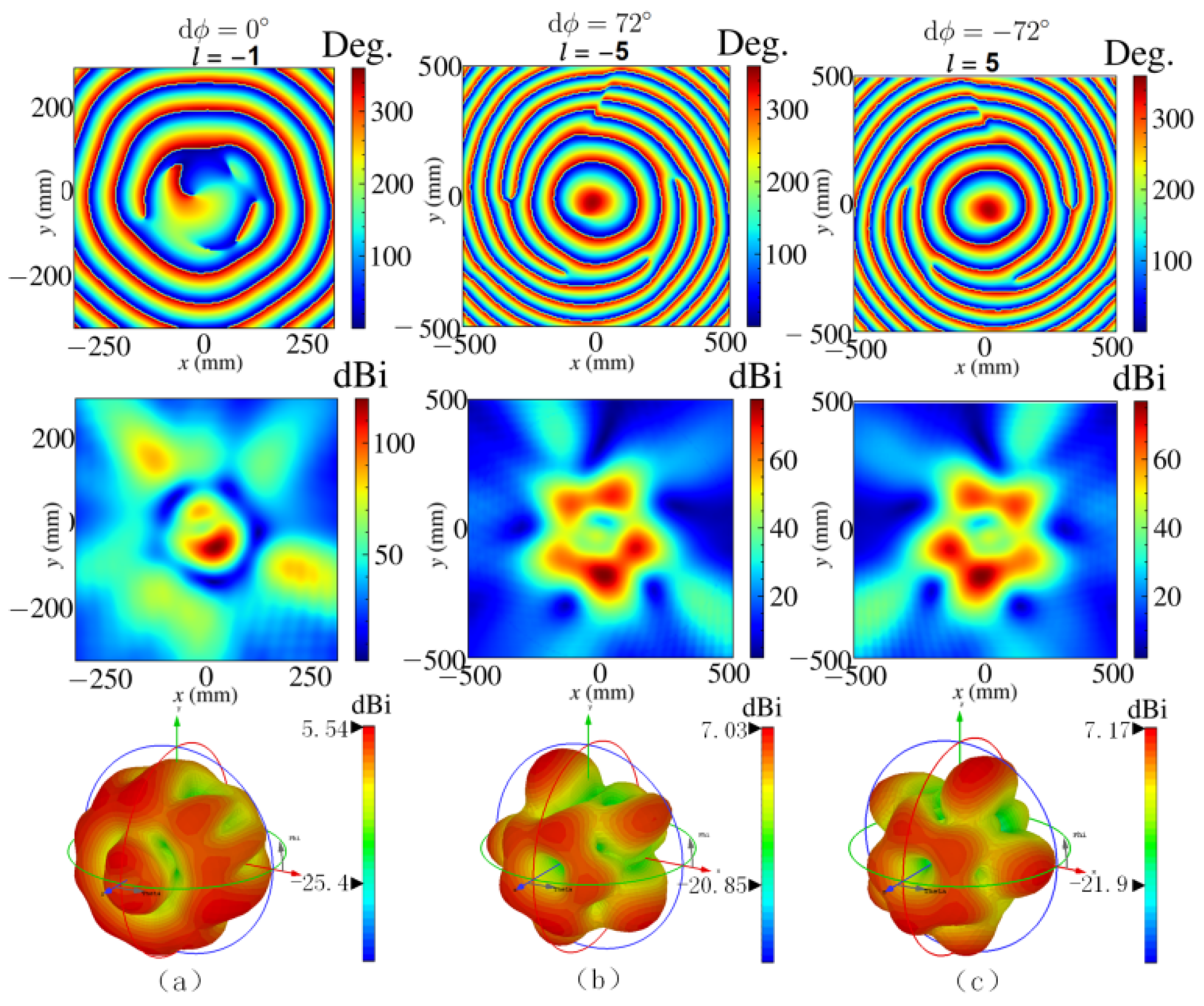
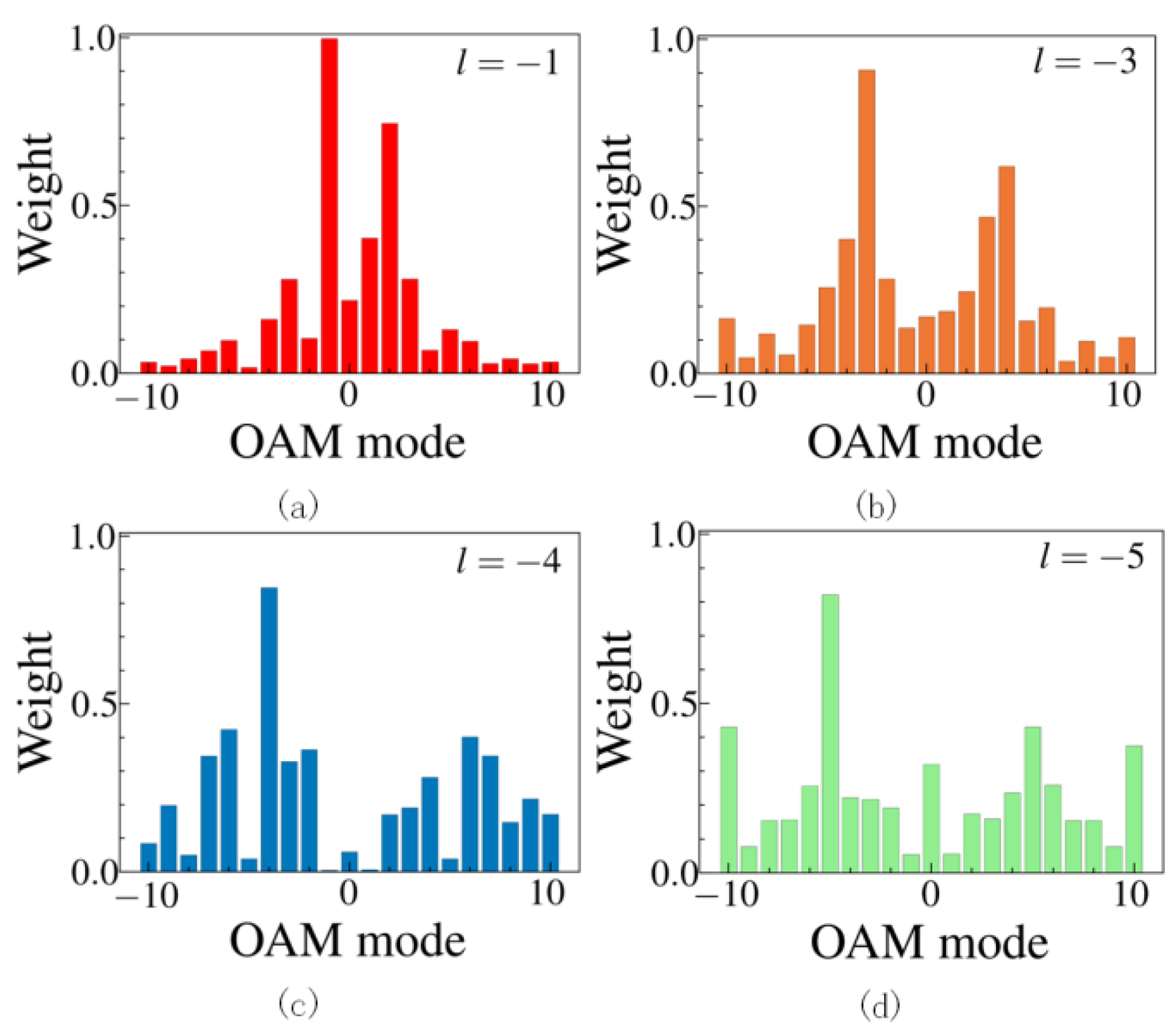



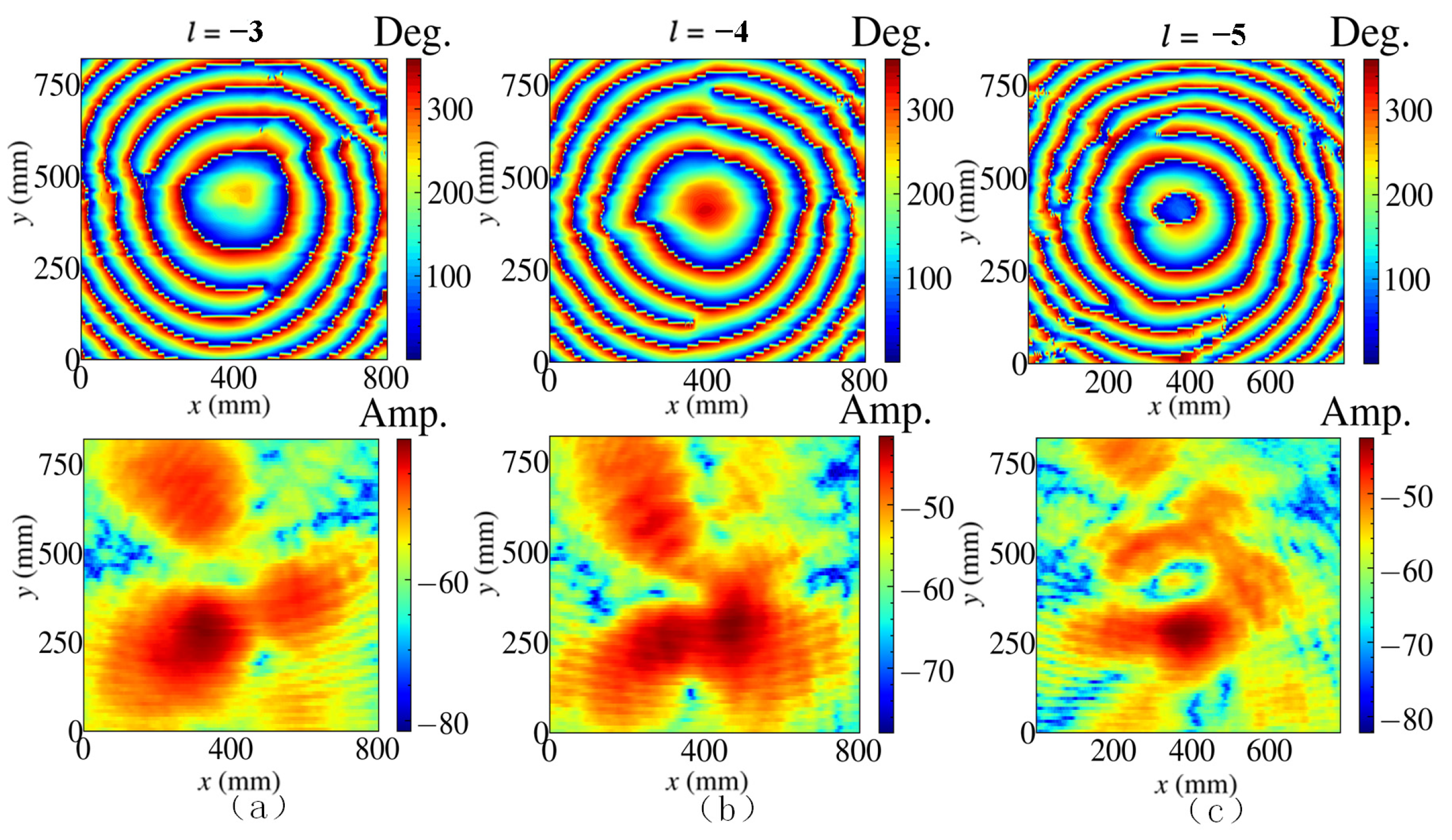
Disclaimer/Publisher’s Note: The statements, opinions and data contained in all publications are solely those of the individual author(s) and contributor(s) and not of MDPI and/or the editor(s). MDPI and/or the editor(s) disclaim responsibility for any injury to people or property resulting from any ideas, methods, instructions or products referred to in the content. |
© 2023 by the authors. Licensee MDPI, Basel, Switzerland. This article is an open access article distributed under the terms and conditions of the Creative Commons Attribution (CC BY) license (https://creativecommons.org/licenses/by/4.0/).
Share and Cite
Song, J.; Gao, S.; Lu, J.; Zhang, S.; Ren, Z.; Xu, J. Design of Orbital Angular Momentum Antenna Array for Generating High-Order OAM Modes. Electronics 2023, 12, 4891. https://doi.org/10.3390/electronics12244891
Song J, Gao S, Lu J, Zhang S, Ren Z, Xu J. Design of Orbital Angular Momentum Antenna Array for Generating High-Order OAM Modes. Electronics. 2023; 12(24):4891. https://doi.org/10.3390/electronics12244891
Chicago/Turabian StyleSong, Jiaxin, Song Gao, Jingtong Lu, Shuai Zhang, Zhiyuan Ren, and Jianchun Xu. 2023. "Design of Orbital Angular Momentum Antenna Array for Generating High-Order OAM Modes" Electronics 12, no. 24: 4891. https://doi.org/10.3390/electronics12244891






